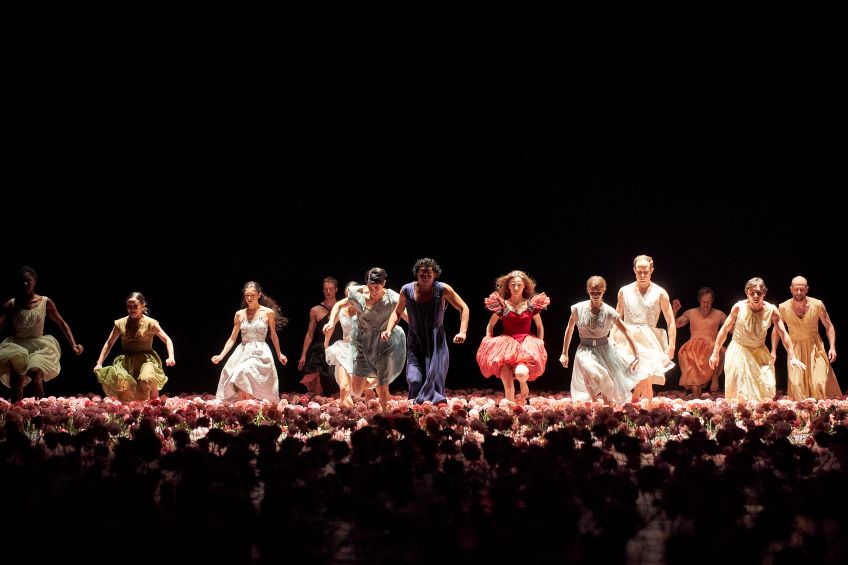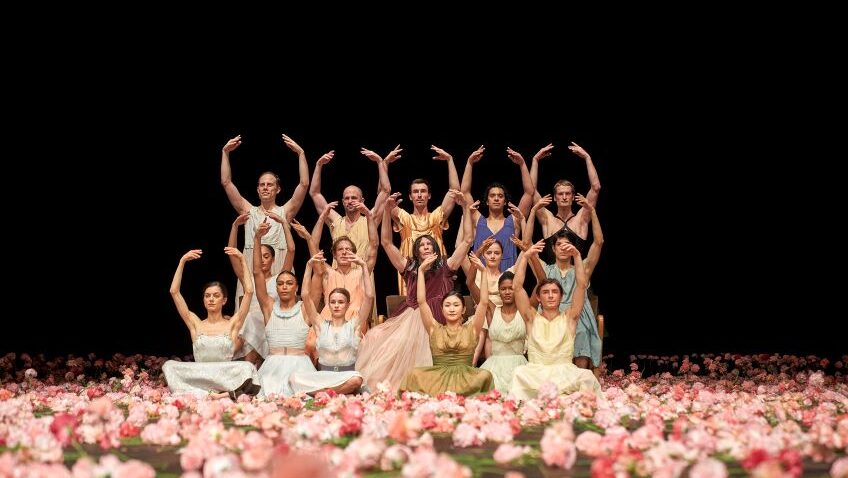Pina Bausch has been coming to Sadler’s Wells since 1982 and her famed dance theatre productions, expressionistic and surreal, beautiful and brutal, have invariably sold-out.
Nelken would be a good choice for those coming to her work for the first time. The whole stage is carpeted with thousands of plastic pink carnations through which the company, initially, gingerly treads, carrying chairs.
The performance is a collage of moments and sequences with the occasional bit of dialogue thrown in. A man signs Gershwin’s “The Man I Love” in universal sign language. A woman walks across the stage naked carrying an accordion. Men, wearing dresses, hop about the stage like bunny rabbits. The whole company, reverting to childhood, takes part in a game of tag.
Bausch is not for people who want to see a ballet. There is an amusing moment when a dancer vents his anger and rails at audiences, who want him to dance in the classical manner, whilst he is actually doing just that, in a bravura solo, showing his skill.

The action takes place in a repressive regime. (Bausch was a war-child in Nazi Germany.) There are four thuggish guards with four Alsatian dogs. The dancers are asked to show their passports and are regularly humiliated. A man is forced to bark like a dog. A woman is forced to eat food she doesn’t like. Men plunge their faces into a plate piled with sliced onions.
The cast regularly rush forwards and backwards, carrying chairs. It seems chaotic but it is extremely well-drilled. They put the chairs down, sit on them and repeat in unison the same grandiose sweeping and rocking movements. Meanwhile professional stuntmen are filling the stage with cardboard boxes.
Bausch’s signature is unmistakable every single moment and particularly so when, every so often, she has the whole company lining up and walking around the stage to a popular song whilst repeating the same four gestures. The audience is invited to stand and do the same; and without hesitation they do.
To learn more about Robert Tanitch and his reviews, click here to go to his website. 




